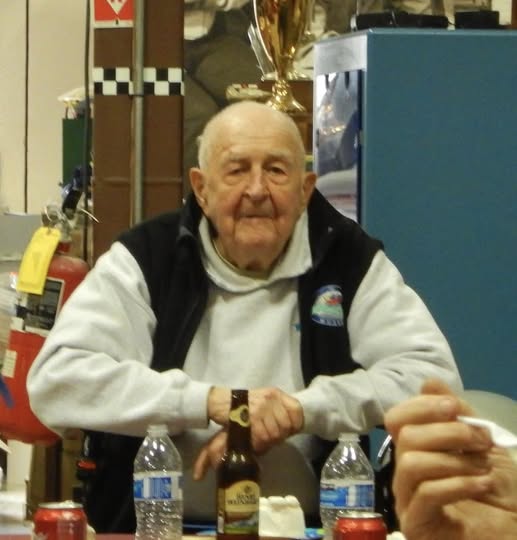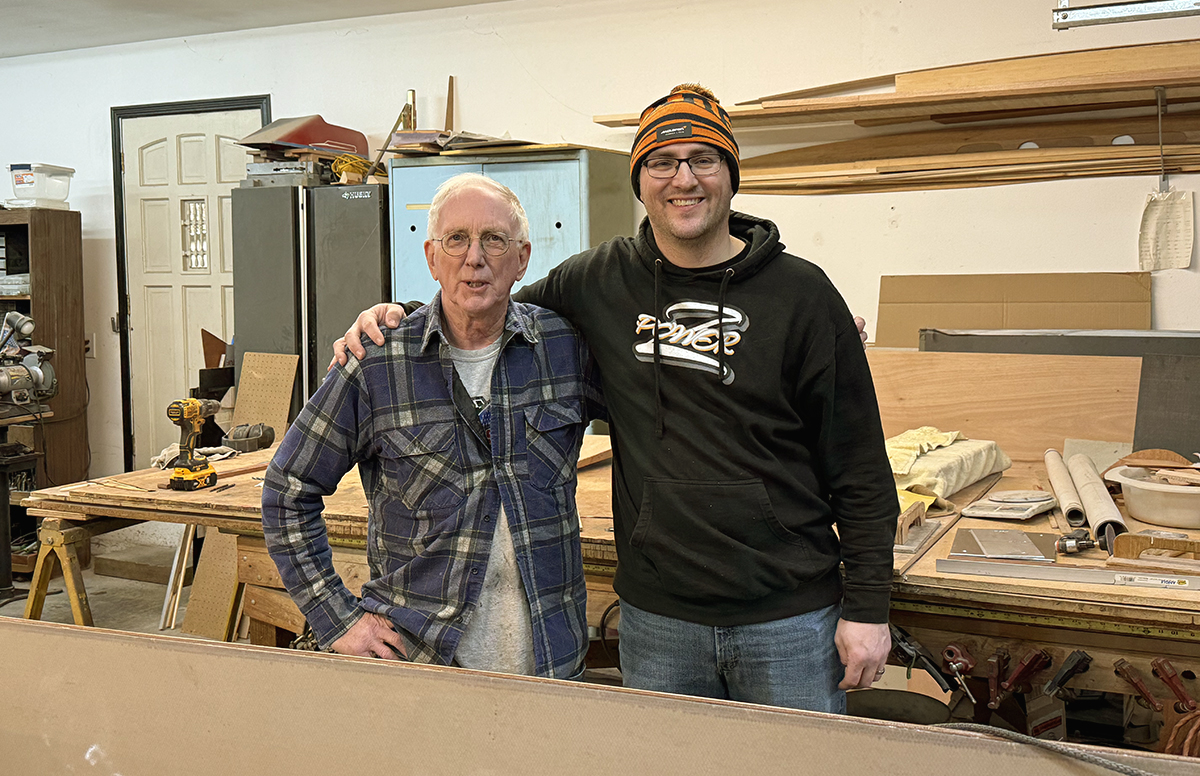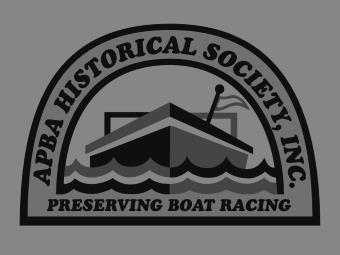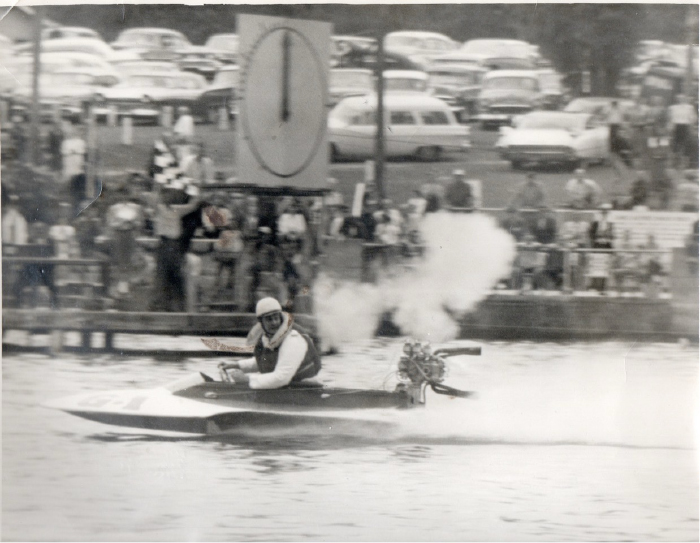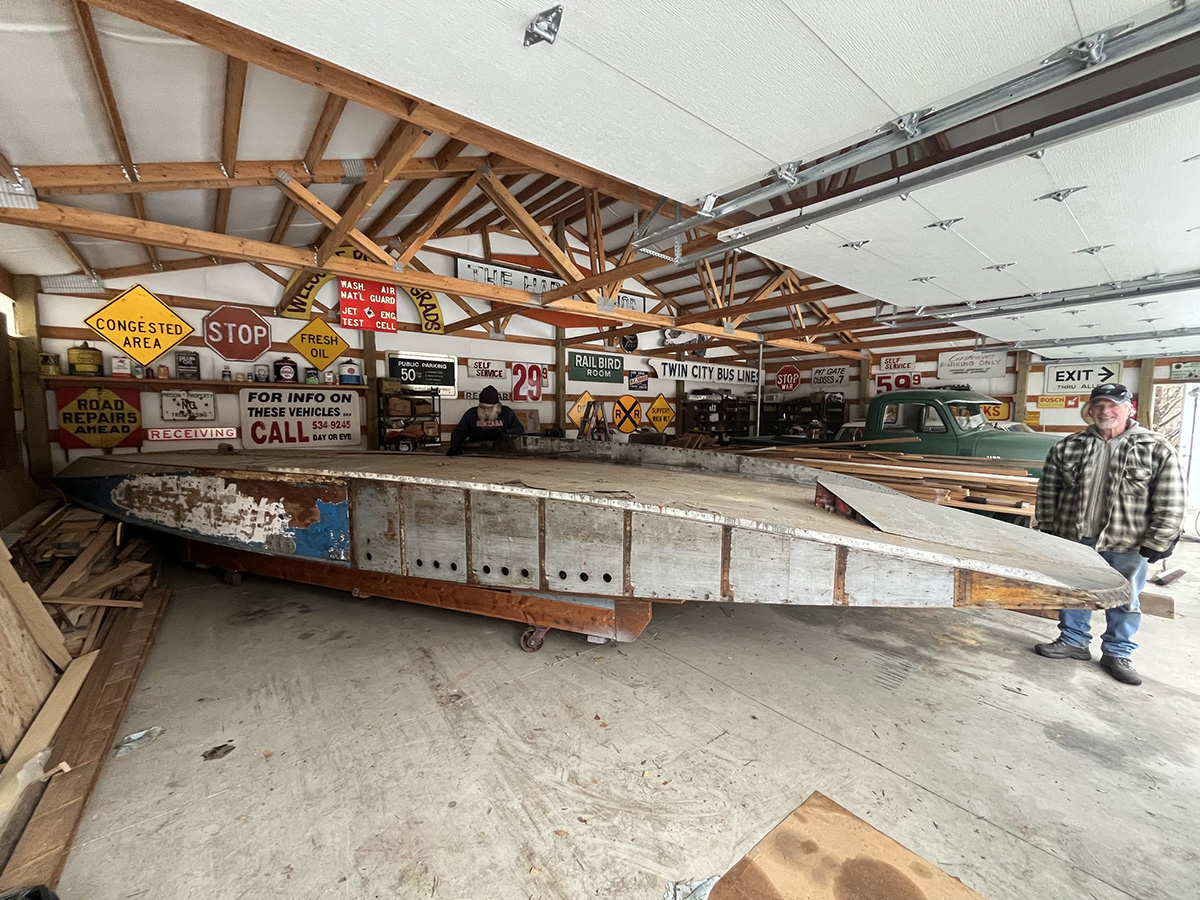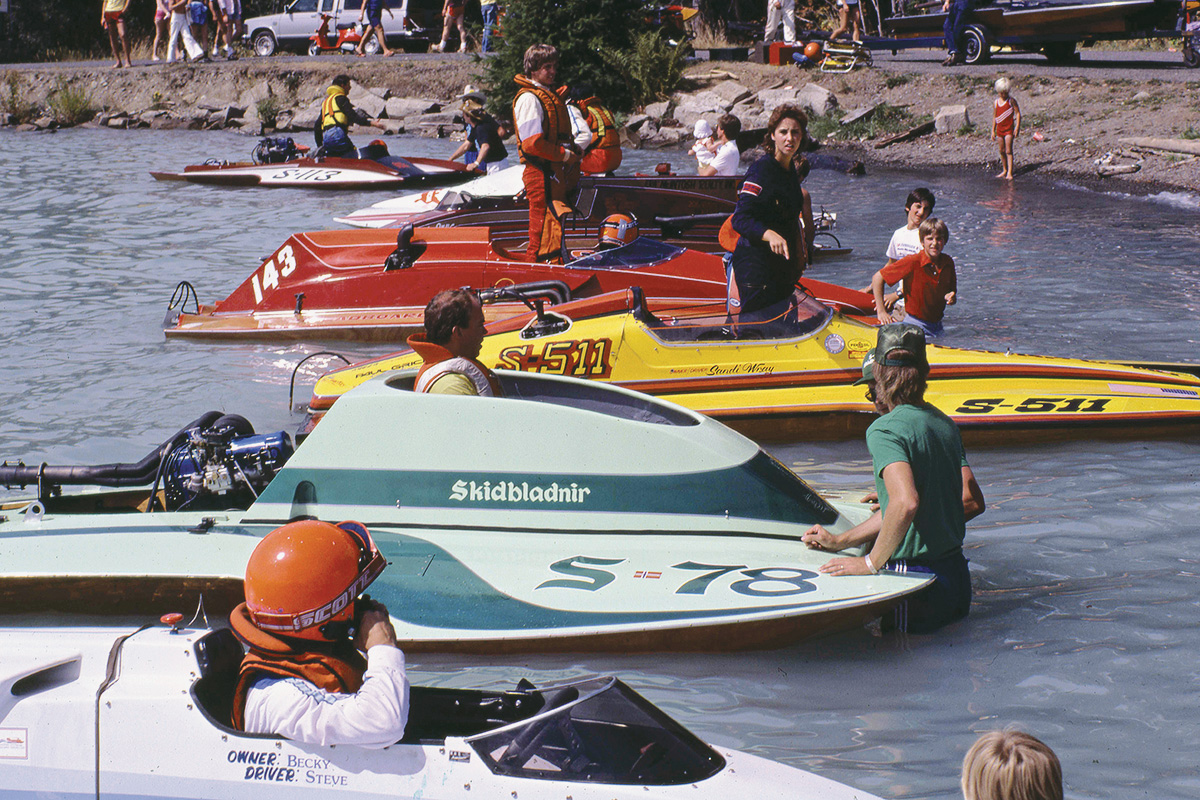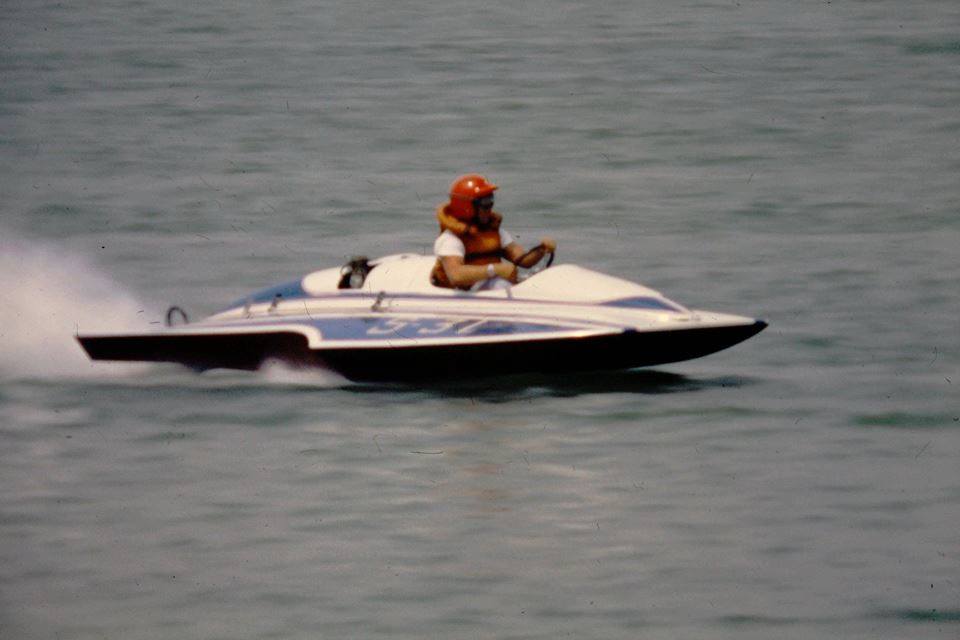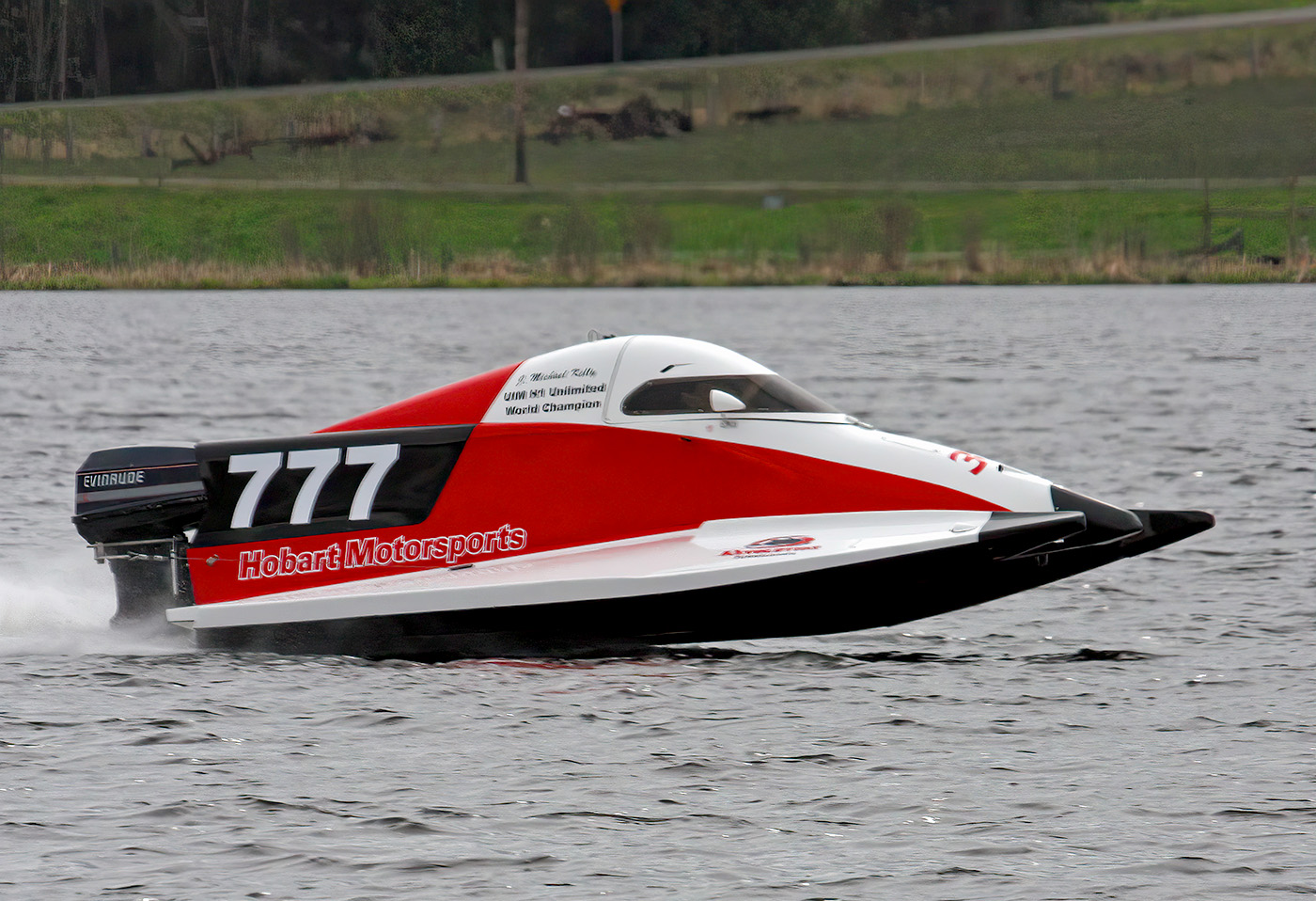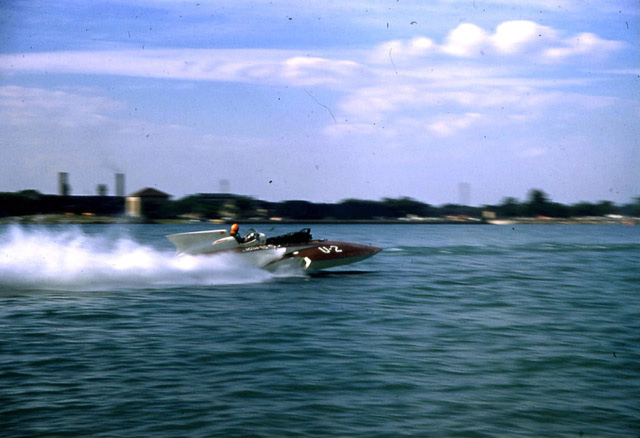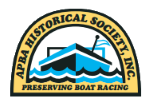Keeping Miss U.S. on the Water
September 10, 2022 - 7:11pm
By Craig Fjarlie
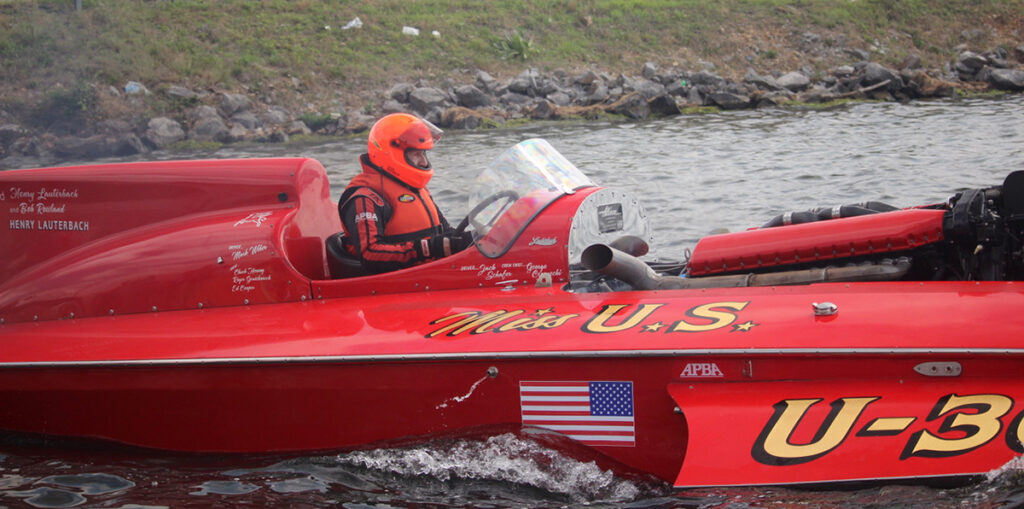
Mark Weber driving the Miss U.S. at Guntersville, Alabama the last weekend of June 2022. Photo by Craig Fjarlie
George Simon was a Detroit industrialist who developed an interest in Unlimited hydroplane racing. He was confident that competing for the APBA Gold Cup would be a good way to advertise his business, U.S. Equipment Company. Simon made his initial foray into Gold Cup racing in 1953, with a boat he named Miss U.S. The Allison-powered craft was designed and built by Dan Arena, who drove it in the Gold Cup that year. Simon opted to drive the boat himself beginning in 1954. In a race on the Detroit River at Windsor, Ontario, the boat flipped and Simon suffered broken ribs, but he continued driving through 1956.
Simon bought a new boat from Les Staudacher in 1956, which he named Miss U.S. II. Don Wilson drove the new boat, beginning an association that would last 10 years. The boat won the Silver Cup in Detroit, but it was the only race Miss U.S. II would win. Meanwhile, the original boat, with Danny Foster replacing Simon in the cockpit, won late-season regattas at Elizabeth City, North Carolina, and Madison, Indiana.
Simon retired both of his boats at the end of the 1956 season, and had two new boats constructed for 1957. Arena designed a new Miss U.S. 1, to be driven by Fred Alter, while Bob Rowland and Henry Lauterbach designed and built Miss U.S. IV, which Wilson was slated to drive. Lauterbach hulls were a rarity in the Unlimited class during the 1950s, and Miss U.S. IV was beset with problems. First, it was dropped by a crane, which delayed its entry into competition. It failed to make the minimum qualifying speed for the Gold Cup in Seattle. The only other race the boat entered was the Sahara Cup on Lake Mead, where it finished in second place on the basis of consistency.
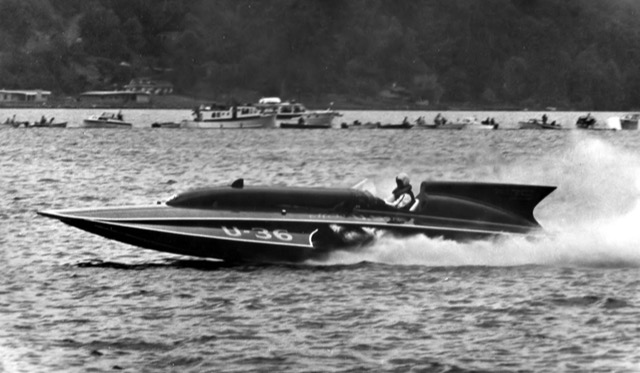
Miss U.S. IV when it came to Seattle in 1957 for the Gold Cup. It failed to qualify.
Photographer unknown.
Wilson moved to the cockpit of Miss U.S. 1 in 1958 and won the President’s Cup. Miss U.S. IV went to only one race, the International Cup at Elizabeth City, North Carolina. Four boats entered the race, and Miss U.S. IV was last in every heat. Driver Frank “Bud” Saile managed to salvage a third place finish because Gale VI flipped in the final heat.
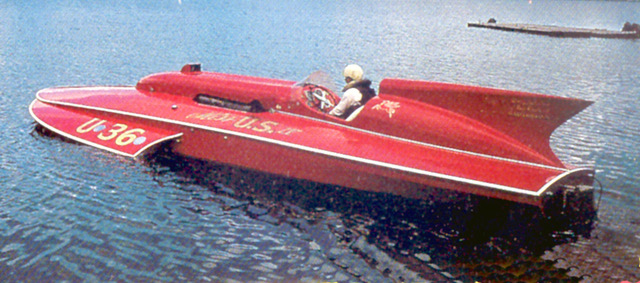
U-36 Miss U.S. IV in its racing days. Again, photographer unknown.
Simon focused his attention on Miss U.S. 1, and Miss U.S. IV was put out to pasture, never to enter another race. In 1962, Roy Duby drove Miss U.S. 1 to a mile straightaway record of 200.419 mph on Lake Guntersville. Over the years, Simon had several other boats in his stable and his drivers included Bill Muncey. The Gold Cup, however, continued to be elusive until Tom D’Eath captured it for Simon in 1976, in a hull built by Ron Jones.
Simon retired from racing following the 1976 season. Miss U.S. IV changed hands and was sitting in a warehouse when Jay Armstrong, of Omaha, Nebraska, entered the picture in 2010. The way he acquired the boat is a story he enjoys sharing. “I’d been going to the Buffalo Launch Club event for a number of years,” he begins. “People would bring various Unlimiteds there and maybe they’d run, maybe they wouldn’t. It was kind of disheartening to see the boats and they just didn’t perform.” One evening, Armstrong was in the bar talking with a friend. “He says, ‘They used to run these boats here and they’d rattle the windows.’ I said, ‘We ought to have a boat here that’ll rattle the windows.’”
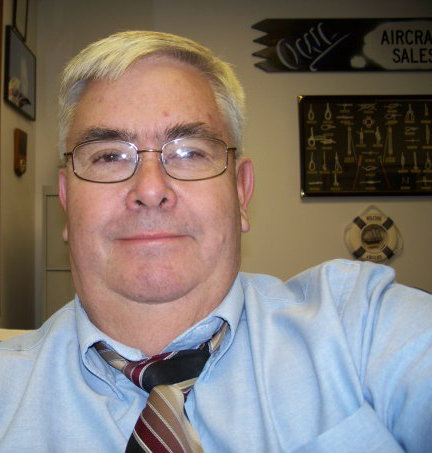
Jay Armstrong, current owner of U-36 Miss U.S., from his Facebook page
Armstrong got in touch with a friend, Dave Grant, of Grand Island, New York, and told him about his desire to obtain a vintage Unlimited. Grant encouraged Armstrong to pursue his plan, and said he would be willing to become involved. “I started looking,” Armstrong recalls. “It was the next year at the event and Fred Alter was there with his green boat, the Miss Vernors. He’s sitting under his boat and I didn’t know him from Adam.” Armstrong told Alter he was interested in obtaining a vintage Unlimited. Alter suggested Armstrong inquire with Doug Morin in Bay City, Michigan. “He’s an antique boat restorer,” Armstrong explains. “I got his number and called him a week or so later and told him what I wanted. He says, ‘As a matter of fact, I’ve got Miss U.S. I’m brokering it for Tom Mittler.’ Tom Mittler was very big in antique boats. He had this beautiful museum in Three Rivers, Michigan. It’s all brick, a multimillion-dollar deal. He’s passed on now, but he was a very wealthy man with this huge collection of boats. He also had classic racecars like Birdcage Maseratis and D Jaguars. He was at a vintage race, had a stroke and ended up passing away a few days later. His wife, Charolette, was left with all this collection of vintage boats and cars to dispose of. She, of course, was in mourning, and understandably didn’t want to deal with it for a while. I called Doug Morin and he told me, ‘I’ve got this hydroplane, U-36. I don’t know if it’s going to be for sale right away. Mrs. Mittler is still trying to decide what to do with everything.’ I said, ‘Tell her I’m the same age Tom was and I haven’t got a lot of time left either. If she has any interest in selling the boat, I’d like to buy it.’ So, Charolette did agree to sell the boat a couple months later and I ended up buying it in 2011.”
Armstrong paid Morin for the boat, and it went to Morin’s shop in Bay City, where the hull was completely rebuilt. “We took the engine and gear box to Omaha,” Armstrong continues. “My friend George Czarnecki had a successful, well-respected aircraft engine rebuild shop there. He expressed an interest in getting involved. We took the engine there, tore it apart, and started the overhaul. Doug got the boat done and we put it in the water in June, 2012, in Chamberlain, South Dakota, at an APBA event there.” Armstrong drove it the first time. “Didn’t drive it very well,” he admits, “but I did get it around the course. First shot right out of the bag, got halfway around the course and it quit because I didn’t turn the fuel on! I’d been around boats all of my life, but I’d never been around an Unlimited. Anyway, that’s what started it. We ran Buffalo that fall with Jack Schafer as the driver and we’ve been running three or four events a year ever since.”
The original name of the boat was Miss U.S. IV, but Armstrong omitted the Roman numeral on the refurbished version. “I didn’t want it on there,” he says. “The boat was an old maid. It ran three events in ‘57 under Simon, and it ran one event in ‘58. Now it has run a lot since we put it in the water in 2012, way more than it ever had. I had to leave it (the Roman numeral) on the trailer, to be fair, but I wasn’t intending for anyone to think of it as something other than U-36.”
Armstrong appointed Jack Schafer, Jr., to drive the boat. “I’d become acquainted with Ed Cooper, and Jack had driven for Ed previously. He recommended Jack. He’s a guy who takes care of the engine and all that. Jack did very well. But in the later years he was having trouble seeing where the markers were, and sometimes went outside the course. He took one fellow for a ride and scared the hell out of him, going over by a beach and far off the course.” Armstrong felt forced to replace Schafer, something that was very difficult to do since Schafer had helped build the program for over 7 years. For the 2019 season he asked former APBA President Mark Weber to take over the cockpit duties. “Mark is very helpful, a very knowledgeable guy who has done a marvelous job with Miss U.S.”
Weber remembers receiving the call from Armstrong. “It was December. I was sitting in my living room and Omaha, Nebraska is calling. I thought, ‘I’ll bet that’s Jay Armstrong. What does he want?’ We had a discussion about the boat and he said, ‘I’d like you to come out to Omaha.’ About a month later I flew out on a Saturday. We had lunch together and spent the afternoon in the shop. Then we had a team dinner. The next morning, I took a flight and was home by 7:00. I was gone one day. I agreed to drive the boat. We went to the first event and it started from there.”
Weber had inboard experience driving Lauterbach hulls, so feels comfortable in the U-36 cockpit. “I owned two Lauterbachs back in the day,” he explains. “I raced them competitively. One was a National Modified, and I had a 1-Litre that would go 110. I had a bunch of experience in conventionals with all the different boats I’ve driven. She’s a big girl,” Weber says of the boat. “It did not handle well at all. Jay spent some money on hardware and things, and really got the boat handling much, much better.”
Heat from the engine is a concern. “It depends on the course,” Weber says. “When you go into Madison (Indiana), the long straightaways with tight turns, from the apex to the exit, if the wind is blowing the right way, the exhaust gas temperatures in the cockpit just climb to a point where I actually held my breath until I straightened the boat back out.”
Weber stresses the importance of communicating with the crew. “At the shop, on a regular basis, it’s Jay, George, and Chuck working on the boat. George Czarnecki, the crew chief, explains everything that was done and why it was done. I’m very much attuned to every change about the boat.”
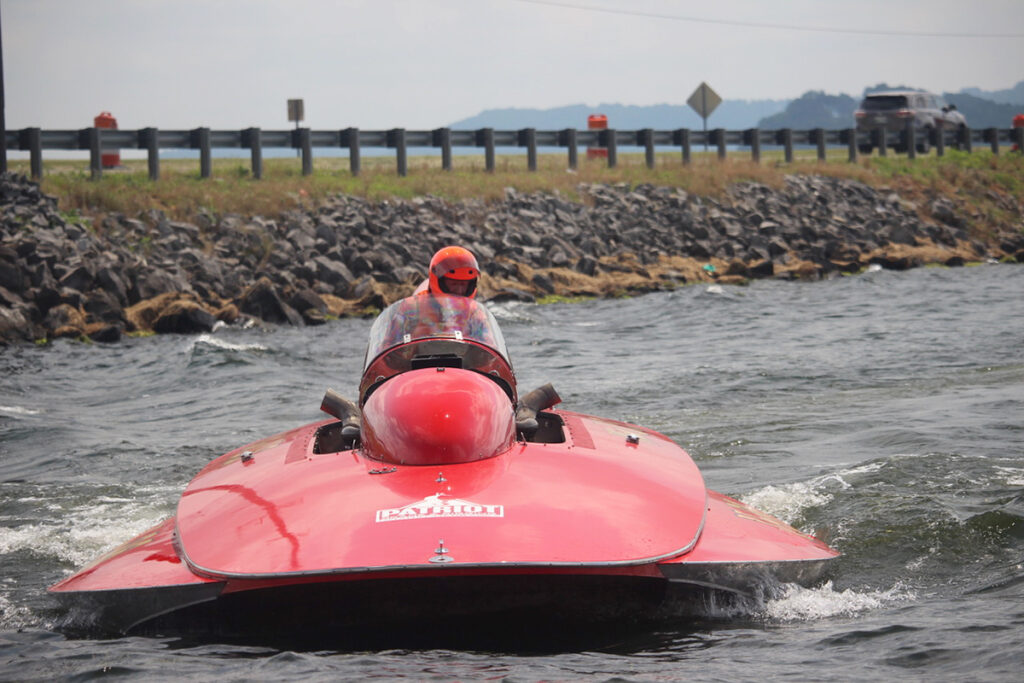
Teamwork pays off: Mark Weber pushed the Miss U.S. to a top speed of 138 MPH, faster than she’d ever gone during her racing days. Craig Fjarlie photo
Ed Cooper, owner of the piston-powered U-3 Grigg’s Miss Ace Hardware Unlimited hydroplane, provides technical advice to Armstrong’s crew. “Jay called me when he got the boat,” Cooper recalls. “He just asked questions about the engine, propellers, normal stuff. Over a period of time, we became friends and I helped them with technical information that I could give them. I enjoy volunteering because there’s no pressure on me. George (Czarnecki) is a really smart engine guy. He probably knows way more about all this than I do. I just thought I’d help out, and I enjoy their company.”
One change Cooper suggested was moving the location of the rudder. Lauterbach built the boat with the rudder in the center of the transom, directly behind the propeller. Cooper convinced Armstrong to move the rudder to the left side. “That was about a three-year struggle,” Cooper says. “It goes back to my association with Bill Cantrell. He said, ‘If you don’t know what to do, go back through the pits and look at the boats that are going faster and just do what they do. After you do that for a while, you’ll understand why.’” Lauterbach eventually stopped placing the rudder in the center of the transom, but when Miss U.S. was built, that was his practice. “Works great for tow boats, but not very good for racing,” Cooper adds.
The vintage Miss U.S. ran exhibition laps during the APBA Gold Cup race at Guntersville, Alabama, in June 2022. Weber pushed the boat to an unofficial average lap speed just over 100 mph, with a top speed of 138, which is considerably faster than it ran during its racing days. The boat is expected to participate in Mahogany & Merlot on Lake Chelan, September 30-October 2. Jay Armstrong’s bright red boat is sure to revive wonderful memories of an earlier time in hydroplane history.

The Unlimited pits at Guntersville. Craig Fjarlie photo
About the name: Just a few minor clarifications about the Miss U.S. boats. The second Miss U.S. 1 that was built in 1957, had an Arabic number 1, not a Roman numeral. However, Miss U.S. II and Miss U.S. IV had Roman numerals. There was no Miss U.S. III. Someone else built a boat for an attempt on the world water speed record and named that boat Miss United States III. To avoid confusion, George Simon skipped the name Miss U.S. III in his fleet of boats.
Featured Articles
